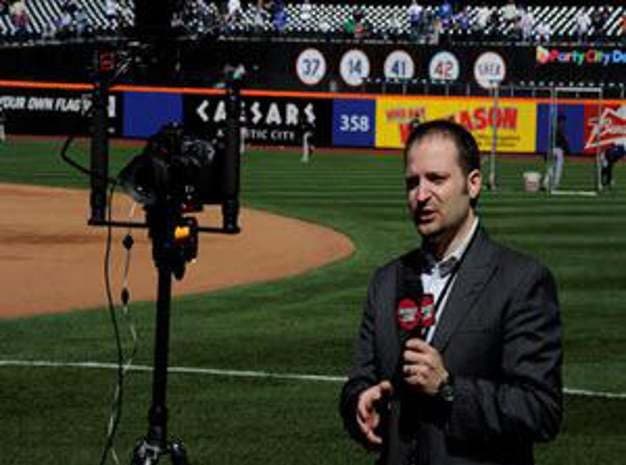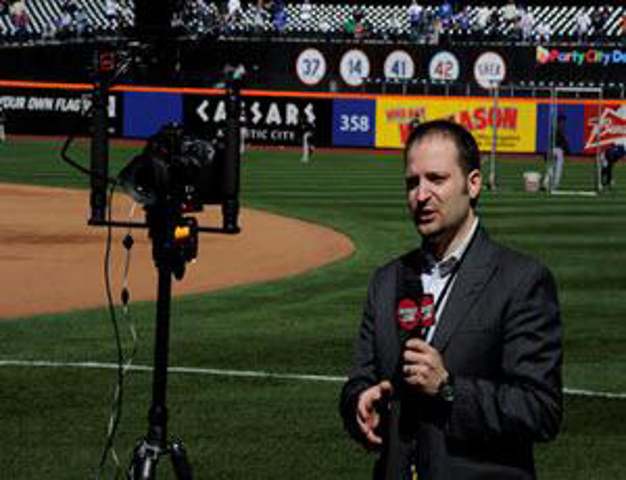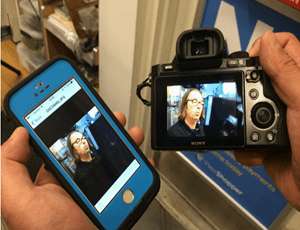You can make your production better and easier with on set wireless monitoring. There are plenty of options, all of which make it easy to do. This is something clients have come to expect and will benefit your crew and entire production.
Edited by Teena Katz
Wireless on set monitoring has been the white elephant, the golden unicorn. It’s something a lot of people ask for but rarely know how to achieve. I get asked about this, as much, if not more, than any other professional video technology question. It’s become so much easier to implement and carry out and since there are no cables involved, people can move around and perform other tasks. It’s pretty awesome, especially because no matter what they are doing on set, people can always have the ability to monitor the current shot. But, it can be confusing, even choosing the right solution can be challenging. However, if done right, wireless on set monitoring is efficient and cost effective. It’s something that makes life easier. There are limitations and it’s hard to figure out the capabilities and what solution is right, but I will help you navigate this process.
There are many reasons why you would want to monitor your camera feed on set wirelessly. You can use wireless monitoring to help pull focus (latency times are so low these days, even at zero in some scenarios), frame the shot, and a whole lot more.
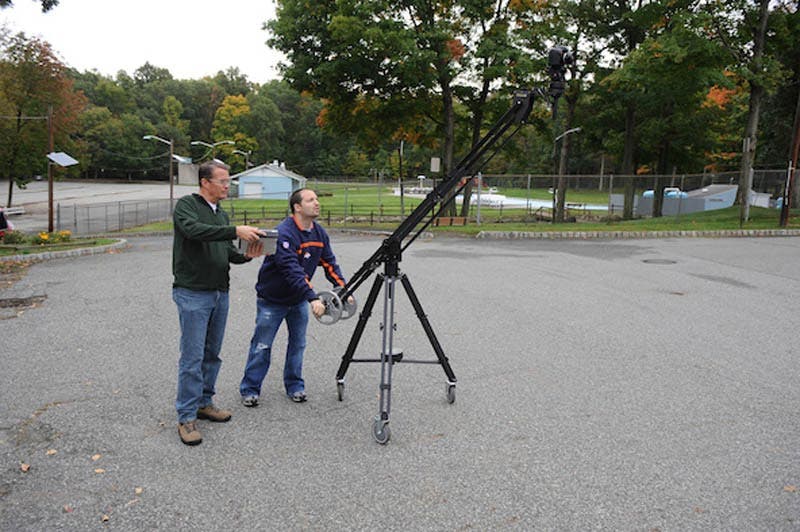
On set wireless monitoring allows you to view video in real time on a tablet or a bigger display. Cutting the cord is great and allows for flexibility. In fact, there aren’t that many reasons why you wouldn’t want to monitor on set wirelessly. Even if you are a one-man band video journalist, wireless monitoring is awesome! It takes almost no time to setup once you have gone through the initial setup. Let me walk you through it.
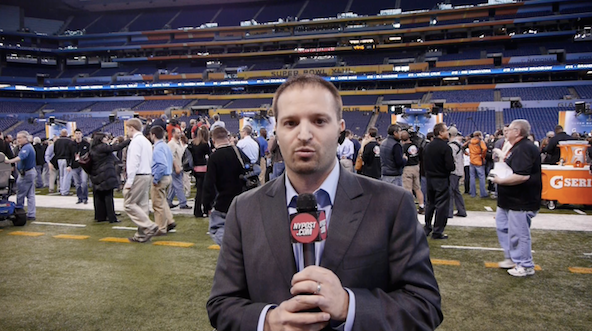
Ten years ago, if you wanted to see what the Director of Photography (DP) saw or you wanted your clients (on a corporate shoot) to view what you or the DP saw, you had to run cables to monitors or have them look in the viewfinder. Neither were particularly good solutions or nimble. They took time to set up and added significant amounts of gear to your already mounting list.
These days, several products (we will get into this more in a minute) offer you the ability to monitor your camera feed from up to 2,000 feet away, without cables. If desired, these products can also be battery operated in many cases.
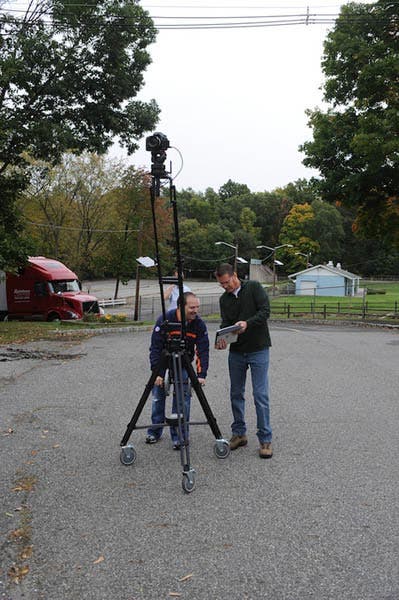
This is great for everyday use, as well as for cranes, dollies, in-car video, and much more. With a narrative, this gives you better opportunities for make-up, continuity, lighting, and for the script supervisors to catch issues. For corporate films, it allows you to keep your client at arm’s length and happy. For journalists and small crews, it allows them to be both in front and behind the camera simultaneously. I am sure you can find a million more uses for wireless monitoring too, including proxy video, digital dallies, as well as XML and EDL lists. With accessories like Timecode Buddy, you can even link and send timecode to streamline the process. Using apps like Light Iron, you can hook the feed from the wireless setup to a server on set and then feed it to several tablets. Producers can then take the tablets home to collaborate and create notes, make edit lists, and shot selections from their tablets. This can really speed up the editing process.
Let’s talk about what you can do and how you do it. The first set of products use RF (radio frequency – microwave signals) to transmit video with zero latency and up to 2,000 feet line of site. These products work point-to-point so you need a transmitter on one end and a receiver on the other end. The receiver would be plugged into a monitor. In some cases, like with theTeradek Bolt or Marshall wireless HDMI transmitter, you can have several receivers picking up a single transmitter. There are many companies that make devices like this, including Teradek, Marshall Electronics, Paralinx, and Switronix, to name a few. These devices are great and very simple to setup. They offer several connection options on both ends from HDMI and SDI to USB 3.0.
With USB 3.0 devices, you can plug multiple receivers into a computer and capture amazing footage without the need for expensive capture cards. You would be doing this wirelessly – without expensive cable runs. In this scenario you can also use this setup to create a wireless live video switcher with the cameras or sources being captured wirelessly. All you need is a computer and switcher software. This isn’t what we are discussing but I wanted to show you another use for these products.
However, these devices are limited to being good only in line of site situations and within a certain distance range. They are great for stadium scoreboards, but not as great in crowded RF situations or where there are obstructions. Additionally, these devices can only go point-to-point. This means you need a transmitter and receiver and without a splitter on the receiver side, you are really locked into using only one display. In this situation, these displays have to be wired and can’t be tablet devices. This is not my favorite scenario or product for wireless on set monitoring because it isn’t as flexible. However, it is great in some cases and can be the only option depending on the scenario, especially when you need zero latency because they tend to be very stable and have zero latency when you can lock in a signal.
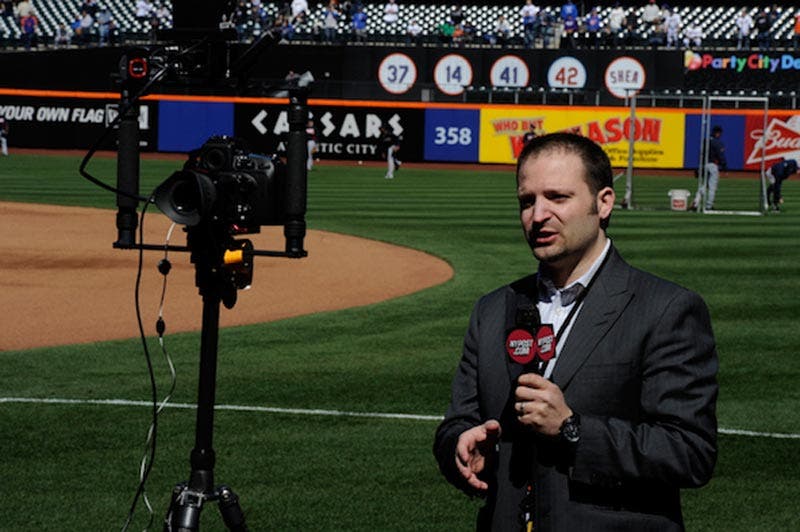
Teradek is a company that makes a few products that can get this done. There are others, but these two are the most known.
First, you will need an encoder. The encoder (transmitter) transmits video over the Internet. The encoder can send the video to a CDN, like Ustream, or to another device called a receiver. This comes in handy when you are doing live broadcasting or when you want to direct a crew, like the B crew, from afar. The B crew can set up an encoder on their camera and feed it to Ustream (or another CDN) and you can watch it online with any connected device (like an iPad) from anywhere in the world. Another option in this scenario, one that is more secure and has less of a chance that anyone in the public can see your work as it’s happening, is to send the video to another device that acts as a receiver (decoder in Teradek’s case) over the Internet. The decoder can also be plugged into a live video switcher or recorder. But that’s a different scenario altogether, so let’s forget it for now. Either way this is point-to-point streaming. With certain services, you can reflect this signal off the cloud to multiple CDNs or receivers (in Teradek’s case these are called decoders). The encoders can connect to the Internet through Wi-Fi, Ethernet, or a USB modem. In short distance scenarios, you can mount and connect an encoder on the camera and either set up a Wi-Fi network or create an ad hoc network with the encoder. Then, you can view the feed from the encoder wirelessly via a tablet (in most cases you can connect up to three tablets wirelessly at the same time) up-to about 150 feet away. In this scenario you will achieve only about four frames of latency. If you are on the receiver side of this set up you can also setup the Wi-Fi or ad hoc network (easy to do) and connect three tablets wirelessly to view the incoming feed in the receiver.
If you need more bandwidth you can use a bonding device to string together the signal strength of multiple USB modems. You can add a bonding device to this setup we just discussed above, and then you can plug in up to eight wireless USB modems depending on the manufacturer.Teradek’s Bond (which comes in different configurations and mounting options), has the ability to bond six modems to the encoder and bond their signals together. The modems can be from different manufacturers. This will give you consistent and high bandwidth so you can transmit the signal perfectly from anywhere where you can get a 3G, 4G, or LTE connection. Thanks to my friend and 24p playback operator, Nils Johnson, Ben Stiller used this scenario, with a Teradek Bond, when he was directing and starring in the film, The Secret Life Walter Mitty. He did this so he could direct the B crew from afar while also starring in and directing the film. Apple also used this Teradek Bond technology and scenario to create their “What is Your Verse” commercial from 24 locations around the world, simultaneously. The Director directed all the different crews from Apple headquarters in Cupertino and the crews transmitted their signal with encoders and bonding devices. I like this scenario because it offers the most flexibility and options. It also allows you the opportunity to use the gear for other things, like live broadcasting, which might come in handy at some point. Depending on the manufacturer of the gear you choose, there are a bunch of different options for monitoring your signal and strength remotely. Some of these cost extra money as they are services.
Most of these products have great instructional videos for initial set up. Set up is usually as easy as setting up a consumer wireless router and sometimes can be even easier. In some cases you will need to unlock features and services with additional licenses, which cost more money. You may also need other services likeSputnik (Teradek) or dashboard. Sometimes these have monthly, annually or one-time fees associated. Most of these are to bond, reflect and monitor your signal and are only for encoders or bonded setups. Products like the Bolt don’t have additional fees. If you go the encoder route, there are things you can do to increase the robustness and range of the Wi-Fi network you create. It will also cut down on interference. The best situation is to set up your own wireless router on set. It doesn’t have to be connected to the Internet unless you want or need it to be streamed to a CDN or a receiver. To begin, you can get directional antennas and also add other routers and antennas to extend range. I likeTP Link gear for this. We used this setup at a very RF crowded tradeshow for our client, Laundrylux/Electrolux. This can help even in the most highly trafficked RF areas. Additionally, you can look up mesh networks and create one. This will all help. Using commercial grade routers can also be a good choice, but they get expensive. Keep all other non-essential traffic off these routers. Get routers with high-speed throughputs. On the very low end and for photo, there are some options. CamRanger might be my favorite option. But, there are some real issues, including camera comparability and latency. One of the biggest issues is that on a lot of cameras the camera LCD screen can kill your photo or DP and can defeat the purpose. But, the gear is always changing and firmware updates always help with improvements. For the smallest of gear – check out the Teradek clip. It’s cheap and small. You can do all these things with virtually any camera. Even most DSLRs now.
Currently, you can transmit full HD 1920×1080 video with all of these solutions. There are no wireless onset monitoring options for 4K video and I think it will be a while before we see 4K wireless video monitoring without satellites. Satellites are how we used to do all of this and sometimes still do. It’s not easy and it’s very expensive. That’s why this is a nice alternative. As for 4K monitoring, I don’t think it’s necessary because for monitoring HD it’s sufficient and many of the 4K cameras can also send an additional HD feed out. The only issue may be with framing.
We use on set wireless monitoring a lot. Corporate clients love it. It’s great for commercials and terrific for directing. I love it for cranes, sliders, in cars, and especially in challenging spots. We usually use the setup with an encoder. I like the flexibility of using an encoder and being able to add a receiver. We recently did live coverage of CineGear, an amazing industry trade show with BeTerrific (BeTerrific.com) on the Paramount Studios back lot in LA, using a bonding device. While it was a little bigger than other offerings, its features and ease of use certainly outweigh the size issue. It was so simple to use and operate. It worked wonderfully. We garnered 300K viewers over two days and we were able to also wirelessly monitor the feed the whole time. We often also use a receiver, especially in single and multi-cam live production, but on set as well. This all works well for us and we can also use the products for live broadcasting. We can even plug the receiver into a live video switcher as a source. This allows us to bring a live correspondent, video, or any feed, in remotely as part of our live broadcast. The encoder can be anywhere in the world as long as it gets an Internet connection. Often times we also use a bonding solution at the encoder end, but bonding can be used on both sides. Batteries and battery plates, in addition to what inputs you will need are important issues to consider before getting a setup like this. I think you will find that this gear will help you tremendously and be extremely important in many scenarios.
Michael Artsis is an Adorama Technologist and a five-time Emmy Award winning host, anchor/video journalist, shooter, producer and director. Michael’s awards include the Society of Professional Journalists and Long Island Press Club. Michael works in live and non live programming and does everything from documentaries and sports, to business and entertainment. Michael also has a digital marketing and video/stills production company. He is the founder of artsismedia.com, BeTerrific.com and iFilmmaking.com. He makes personal appearances in store weekly to talk tech and does seminars on iFilmmaking.
